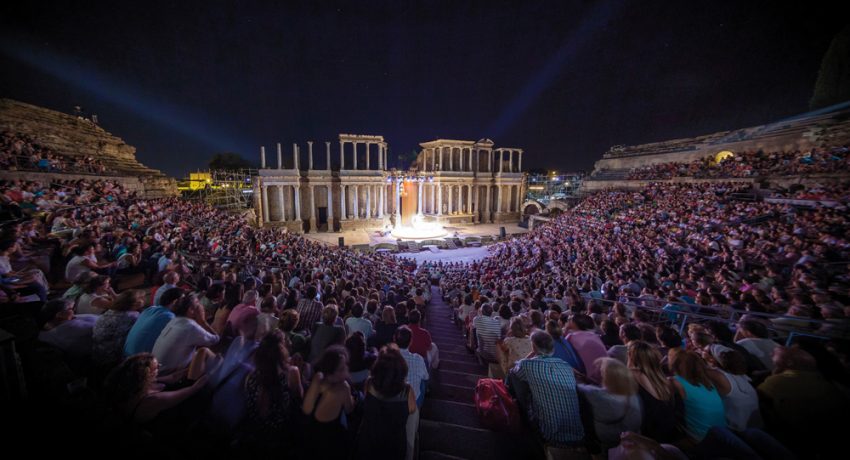The Roman Theater is, without a doubt, the most representative monument of Mérida. And, by extension, it is also the most emblematic stage of the long history of its International Classical Theater Festival, which has taken place there since 1933. To this day, it is still a luxury to be able to enjoy a theatrical performance on a night of summer in the same place where it was done more than two thousand years ago.
According to an inscription made in the theater itself, its construction took place between the years 15 and 16 BC. at the request of the consul Maco Vipsanio Agrippa.
Given such a long existence, and being totally exposed to inclement weather, it is normal that it has undergone several renovations, the most important of which took place at the end of the 1st century or the beginning of the 2nd century, apparently during the time of Emperor Trajan. It was then that the current facade or front of the stage was built, which has three openings through which the actors access the stage. Later, between the years 330 and 340, under the government of Emperor Constantine, new architectural-decorative elements were introduced, as well as a cement road.
The Roman Theater had a capacity of six thousand spectators. These were distributed from bottom to top according to their social rank in three sectors of steps or caveas, which were separated by corridors and barriers, and which were reached by stairs located radially. To access the entrances, a series of corridors were established.
A certain decline came with the years of development of Christianity, which considered theater as something immoral. For this reason, the Roman Theater was abandoned and even covered with sand, so that only its upper tiers (summa cavea) remained visible. It later received the popular name “The Seven Chairs” since, according to tradition, it was said that the various Muslim kings had sat there to decide the fate of the city. Its excavation did not begin until 1910.
The Archaeological Complex of Mérida, in which the Roman Theater is located and which is one of the main and most varied archaeological complexes in Spain, was declared a World Heritage Site by UNESCO in 1993. The theater is located in a peripheral location within the Roman city, next to the wall, and with a large part of its stands leaning on the San Albín hill.

